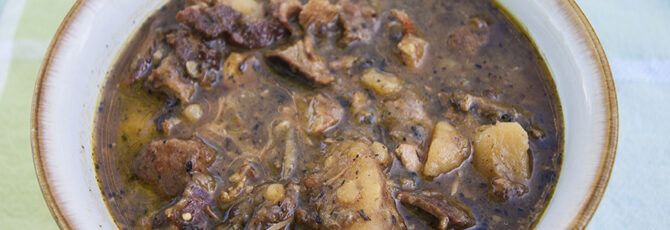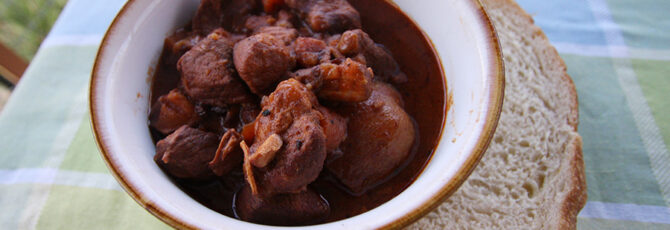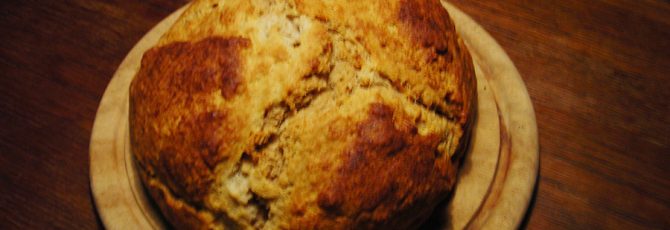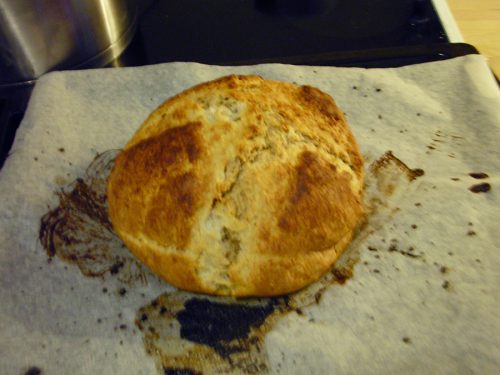Perhaps the most fitting meal for winter is the spicy stew. Bubbling in a pot on the stove for hours on end, it’s a filling meal that warms the body, warms the soul and warms the taste buds.
I have my own take on classic green chile stew, which assumes that there are no leftover roasted chiles from the roasting season and that you know how much heat you can tolerate.
This stew gets its classic smoky flavor both from the use of vegetables roasted in the oven – chiles, onions and tomatillos – and from bacon.
When I first started working on this recipe, I used two to three pounds of chiles. To me, that was not nearly enough, and future iterations were made with four to five pounds.
I also have a taste for the acidic. I love a hot and sour soup, which gets its sour from vinegar. In this case, I like to add some lemon and lime juice to the stew to give it a little more of an acidic kick than might be in the usual green chile stew recipe. More importantly, the little addition of acidity really made the flavors pop, just like a tiny bit of salt when the stew is being served that unlocks the flavor of a dish.
The recipe is broken into a few different parts. The first is the roasting of the vegetables. Recipes follow into two camps: a Dutch oven or on baking sheets. If you go with a baking sheet, use parchment paper instead of aluminum foil because all the liquid the vegetables release will make them stick to the metal. Also, make sure they are far enough apart that they aren’t steaming each other.
I included potatoes in my recipe to add a starch, but they are by no means required. Rice is another option.
The beef or chicken stock will add plenty of salt to the stew, but if more is desired, add additional salt — and pepper — at the very end of the cooking process, or even make sure a salt shaker is available when serving. I find that each person usually has a different level of ideal saltiness, which is better served by slightly under salting than over salting a dish.
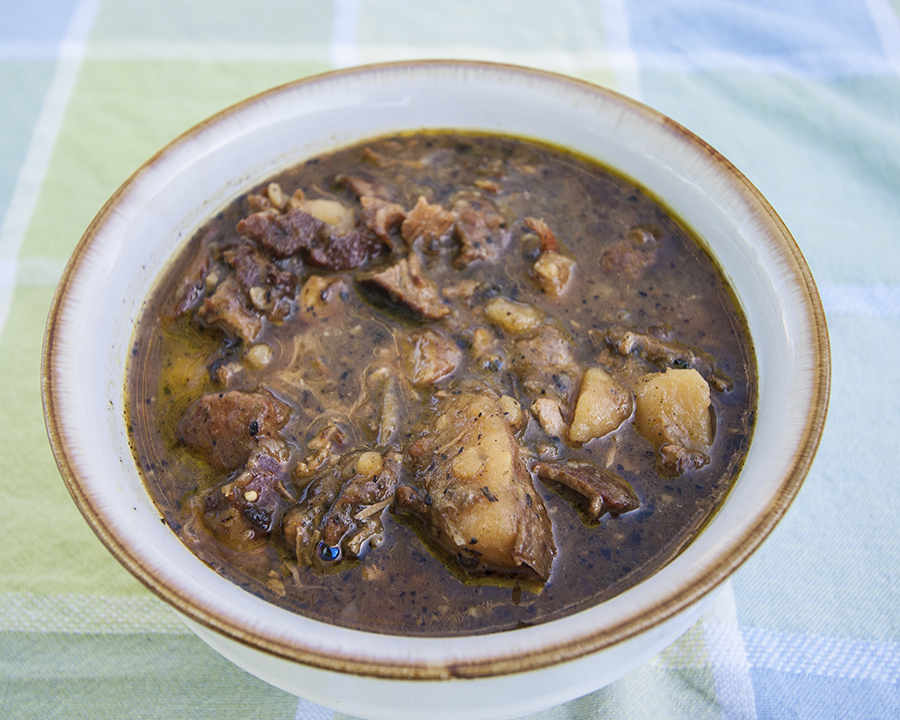
This green chile stew may not be green as chile verde, but it is just as delicious.
Ingredients
- 4-5 pounds chile peppers
- 4-5 tomatillos
- 2 medium onions
- 2-3 pound beef or pork roast
- 5 cloves of garlic, chopped
- 1 pound bacon (optional)
- 5 red potatoes, cut in quarters (optional)
- 5 cups chicken or beef stock
- 1 tablespoon cumin
- Vegetable or canola oil
- Lemon and lime juice
- Salt and pepper
- Water as required
Directions
- Preheat the oven to 400 degrees
- Wash all the peppers and tomatillos
- Cut all of the peppers in half, take off the stems, deseed if desired and cut the onion into quarters
- Either place the peppers, onion and tomatillos into a Dutch oven or place them, skin-side up, onto baking sheets lined with parchment paper. Sprinkle vegetable or canola oil over the vegetables.
- Roast for 40 minutes to 1 1/2 hours, until very fragrant.
- While the peppers are roasting, cut the pork or beef roast into 1-inch cubes.
- In a medium pan, fry the bacon. Remove the bacon to a side dish.
- In the same pan, begin browning the pork cubes in small batches on high heat. Do not crowd the cubes. If not using bacon, brown with oil.
- Remove the pork cubes to a separate dish.
- When the vegetables are done roasting, put them into a food processor or blender along with the chopped garlic. Add 1/4 to 1/2 cup lemon juice. Blend until pureed.
- Add the chicken or beef stock to a large pot, along with the vegetable puree, pork/beef, bacon if being used, cumin, bones (if a bone-in roast was used) and potatoes.
- On medium heat, bring to a simmer. Reduce to low heat, and stirring occasionally, simmer for 2 to 5 hours.
- If the liquid level gets too low, add water or stock.
- When done, remove the bone to a dish. Remove any remaining meat from the bone and add the meat back to the stew. Throw away the bone.
- Salt and pepper to taste.
- Add 1/4 cup lemon juice and 1/4 cup lime juice to the stew and stir in. Add more juice as desired or to taste.
- Serve or cool and serve the following day.
